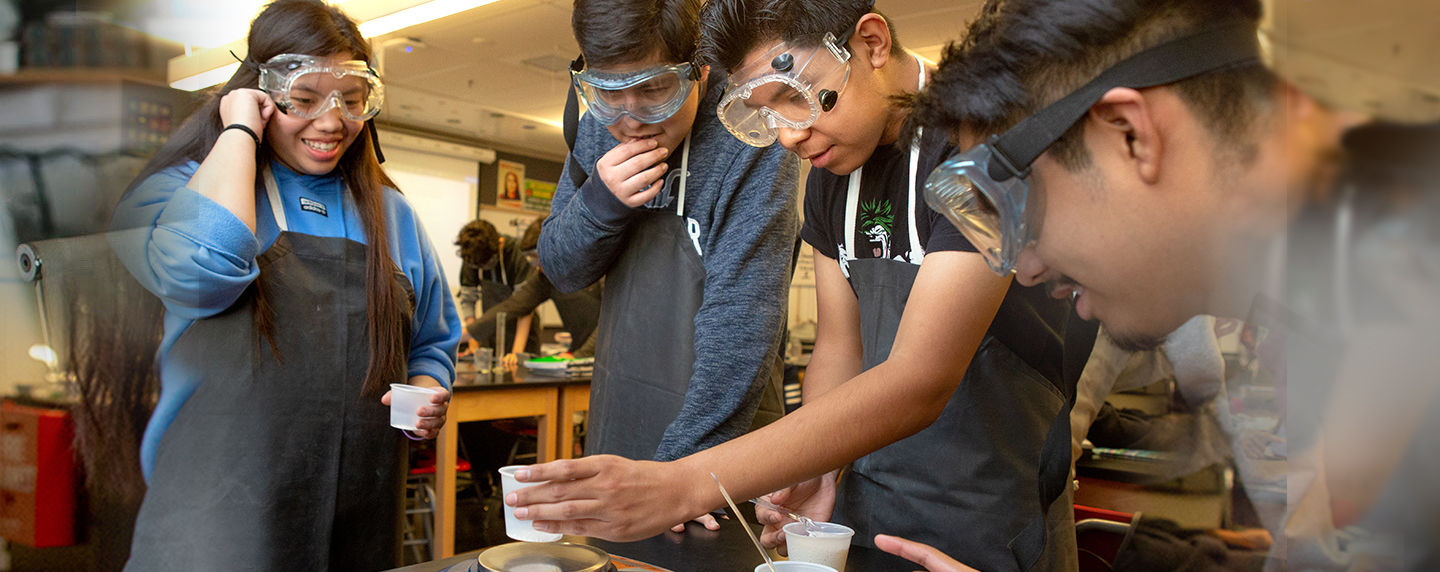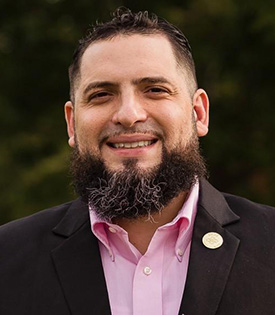
Stories of Impact
Back to In Action / Juan Valentin, Education Advisor
Juan Valentin
Education Program Advisor, U.S. Patent and Trademark Office, Office of Education
A mechanical engineer by trade, Juan Valentin has dedicated his career to Invention Education and the importance of intellectual property. Since 2002, he has worked in the USPTO, first as a patent examiner and for the past eight years as an education program advisor, developing and implementing projects for K-12 educators across the country that focus on learning through invention, STEM, and design thinking.

Juan Valentin
What we love about intellectual property is that we’re teaching creativity. We’re teaching inventiveness.
How do you help students understand something as complex as intellectual property?
It’s a fun part of my job — taking the complicated subject matter of patents, trademarks, copyrights, and trade secrets, and distilling it into bite-sized chunks that learners, particularly K-12 students, are going to be able to digest and remember. By breaking it down into its individual parts, it becomes relatable to students. They read, write, and draw pictures, and those are all things that are in a patent.
Why is it important to teach students about IP?
Intellectual property is important to teach because it incentivizes and breeds innovation — and because protecting the rights of inventors and their creative works is in our Constitution. People think IP is about protection, and it is, but before you can protect you need to create. What we love about intellectual property is that we’re teaching creativity. We’re teaching inventiveness. And the beauty of the patent database is it’s free, it’s online — anybody can go and look up the history of the telephone or the bicycle. You have an evolution of innovation in front of you.
How have you seen students react to getting a patent for their work?
It’s so cool that students are inventing and taking it to the next level by seeking patent protection. It’s not important whether they sell it or whether it gets made. The important part is they went through that invention process, that problem-solving process, and they have this document that says, “This is my original idea.” That’s something they’re going to put on their wall, show their kids. It’s going to be handed down like a family heirloom. That’s special.
Do you remember when you first got hooked on Invention Education?
In life, there are defining moments that you’re not expecting. A few years into my professional career, a colleague asked me to do an outreach event at an elementary school in Washington, D.C., and I said yes — that was my defining moment. Who knew that making gooey slime with third graders would kickstart a lifelong passion for Invention Education? In that classroom, I saw how it can show students a new way to engage with learning and shape their futures.
With Invention Education, you find the problem, and allow that problem to identify where the learning journey is going to take you to solve it.
How do you think invention engages students of all different learning styles?
I love invention because it is transdisciplinary. It crosses subject matters. In fact, with Invention Education, there really isn’t a subject matter. You find the problem, and you allow that problem to identify where the learning journey is going to take you to solve it. Maybe you need to learn a little bit about circuits or electricity, or plumbing, or carpentry. And so these skill sets are developed in order to solve a problem.
What are some other skills and mindsets that it builds in students?
Agency is a big one — students are doing something for purpose. And I think at the end of the day, if all our students are building for purpose, or at least educating themselves for purpose, then they will go into their communities and have that agency to make the world a better place.
How can Invention Education bring more equity to STEM?
We read about the famous inventors, but inventors are also the students in the classroom. And invention is not for one particular community or another — it’s for everybody. If you have an inventive mindset, you’re going to be able to aspire to reach higher. It’s going to provide you that extra incentive to say, “ I’m going to go out there and get myself to where I need to go, where I want to go.”
